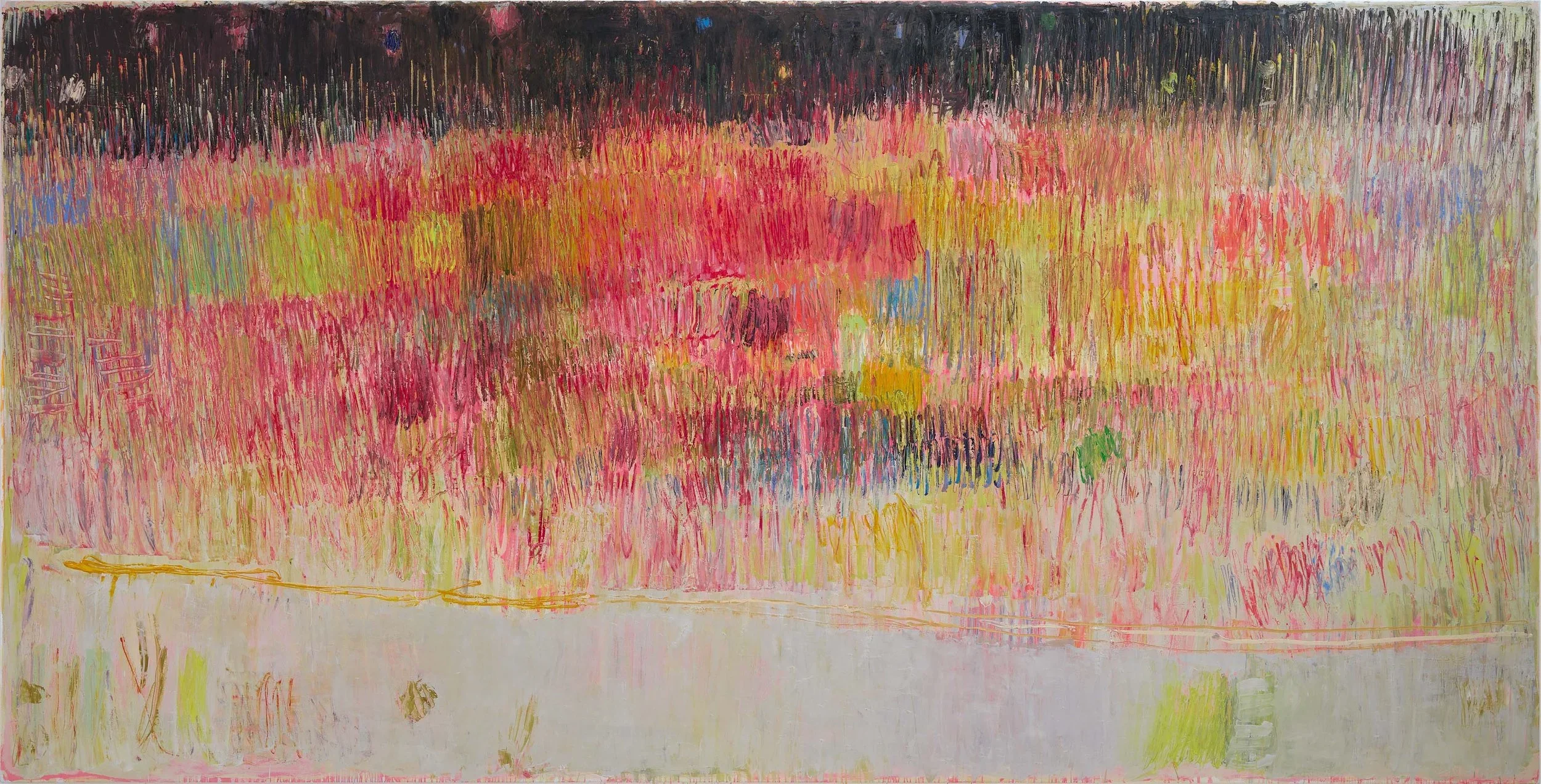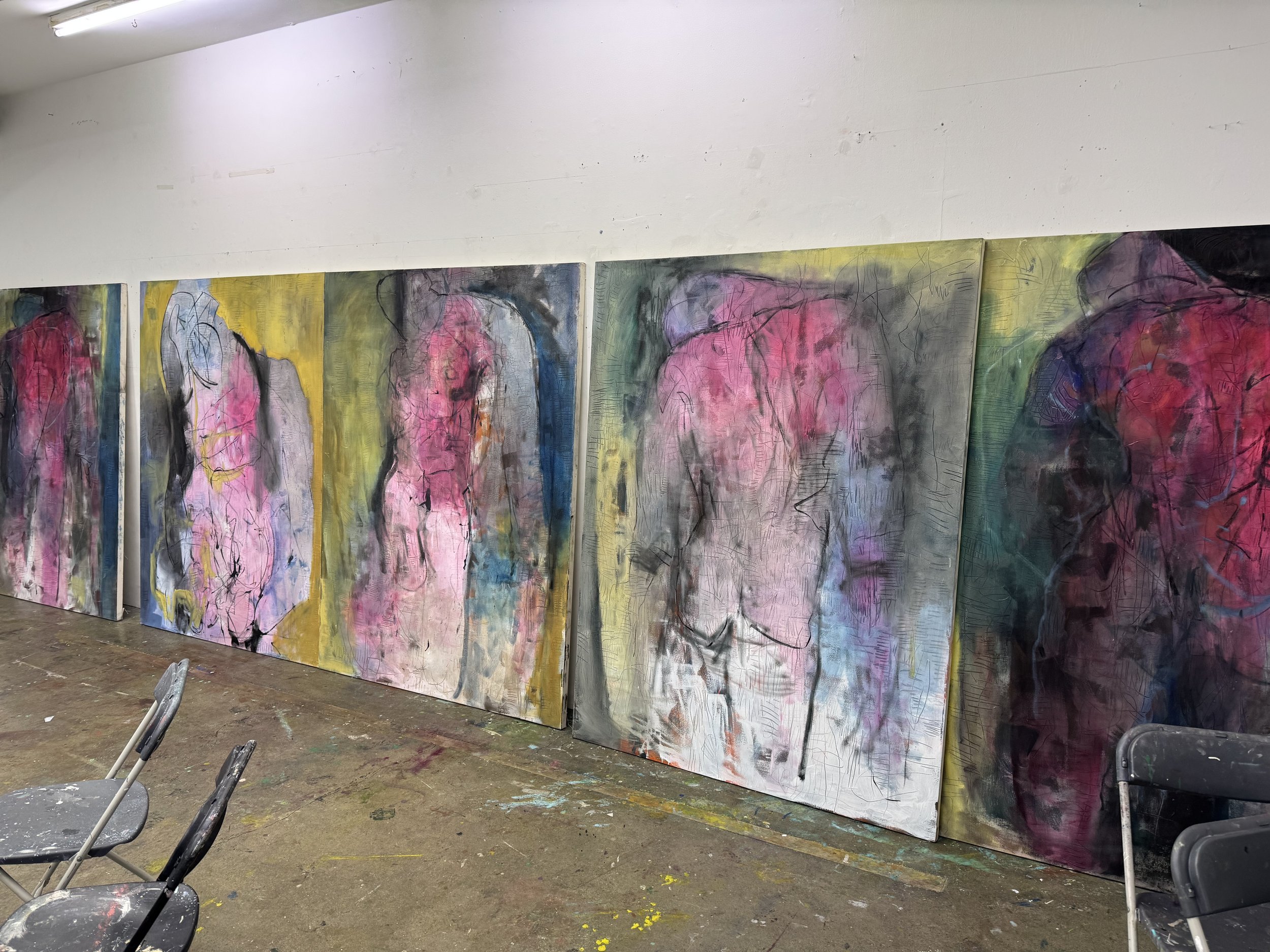From Cennini to Elkins: Rethinking Painting Pedagogy Beyond the Atelier and the Art School
Rose, Christopher Le Brun PRA. The studio becomes a place not of recipes or of rhetoric, but of cultivated judgment in response to a living material partner.
Painting is frequently taught and theorised through two dominant approaches: either as the acquisition of correct skills, framed in technical or imitative terms, or as the development of conceptual positioning, framed within the discourse of contemporary art. Both approaches can prove limiting. Skill-based approaches often reduce painting to the reproduction of styles, suppressing innovation and ambiguity. Conversely, concept-driven approaches often disconnect painting from its material ground, leaving students unable to reconcile theory with practice. The history of painting pedagogy can in many ways be read as the alternation between these poles. From Cennino Cennini’s Il Libro dell’Arte in the early fifteenth century to James Elkins’ Why Art Cannot Be Taught at the beginning of the twenty-first, the dilemma has persisted: is painting something that can be codified and transmitted, or something that resists codification, slipping into metaphor, irreducibility, and personal discovery?
Cennini’s text has often been taken as the foundation stone for systematic instruction in painting. Composed around 1400, it presents painting as a series of recipes, exercises, and technical rules. Apprenticeship was not a matter of invention but of submission to process: one repeated what was demonstrated, copied masters, and acquired habits of material preparation and execution. Colour was to be ground in a particular way, tempera egg to be mixed in a ratio, drapery folds to be shaded by established progression. To modern eyes the book can seem mechanical, but it served a crucial purpose. Painting was here framed as a craft discipline, transmissible and reliable, where progress could be measured against fidelity to known methods. For centuries the workshop and later the academy formalised this model: to become a painter was to acquire mastery over a stable body of knowledge and procedure. The French Académie royale, with its rigorous hierarchy of drawing, copying, and history painting, and the nineteenth-century ateliers of Gérôme or Bouguereau, represent a straight line from Cennini’s systematised craft to the ateliers still functioning today in Paris, Florence, and, via the revivalist movement of the Art Renewal Center, in the United States.
Yet the limits of this model are as clear as its virtues. By defining skill as adherence to precedent, innovation is easily treated as error. The atelier’s emphasis on repetition of canonical forms leads to technical assurance but at the cost of agency and experiment. It is no accident that the avant-garde of the late nineteenth and early twentieth centuries defined themselves precisely against this orthodoxy. The Impressionists’ refusal of academy finish, Cézanne’s reconstruction of form through shifting colour, or Picasso’s demolition of perspective all signalled that the rules of craft had become fetters as well as foundations. If Cennini offered a grammar, then by the modern era painting required something more akin to poetry.
The rise of the art school in the twentieth century represents the other pole of the pedagogical arc. Where ateliers were intimate, apprenticeship-based, and hierarchically ordered, art schools grew as democratic institutions shaped by modernist and post-war educational reforms. The Bauhaus provides a paradigmatic moment: here, teaching was not a matter of copying the masters but of experimentation with form, colour, and material. Exercises in basic design and colour theory, exploratory workshops in glass, metal, or weaving, were designed to give students not rules but problems. The artist was to be a constructor, a problem-solver, even an engineer of visual experience. From this seed grew a model of art education that prioritised creativity, critique, and theoretical framing. In the second half of the twentieth century, particularly under the influence of conceptual art, the teaching of painting increasingly shifted away from questions of how to apply paint towards questions of how to position one’s practice within discourse. Critiques and seminars became the dominant pedagogical form, and the material craft of painting was often left for students to discover — or abandon — on their own.
This shift had profound consequences. Students learned to speak fluently about semiotics, politics, and philosophy, but were frequently under-equipped to wrestle with the recalcitrance of paint itself. Painting was tolerated, sometimes, as a vehicle for theory, but rarely foregrounded as a stubbornly autonomous activity. The risk of the atelier is that it produces technicians without imagination; the risk of the art school is that it produces thinkers without craft. For many painters, the lived experience of art education was to oscillate between the two, seeking in external ateliers the technical confidence they could not gain in their university course, or seeking in theory the validation denied by the atelier.
It was in this climate that James Elkins emerged as a leading voice at the turn of the millennium. His What Painting Is(1999) was already a departure, refusing to treat painting as a language of representation and instead likening it to alchemy: a physical, unstable, transformative engagement with matter. But his Why Art Cannot Be Taught (2001) struck a deeper chord in pedagogy. Elkins argued that art resists codification: there are no universal rules, no transferable methods, no reliable curricula that guarantee the making of an artist. Art, unlike science or the humanities, cannot be taught in the conventional sense. At best, students can be inducted into a set of practices, exposed to critical discourses, and encouraged towards discovery; but the core act remains elusive, irreducible, a mystery that cannot be standardised. Elkins’ paradox is thus double: painting is material, alchemical, but also pedagogically opaque.
At roughly the same time, other scholars were attempting to resolve this impasse. Elliot Eisner, in The Arts and the Creation of Mind (2002), proposed a discipline-based approach, treating art education as a way of cultivating perceptual and imaginative capacities, while Graeme Sullivan’s Art Practice as Research (2005) insisted that studio practice could function as legitimate research inquiry. Both sought to insert art education into a broader academic legitimacy: art as a way of knowing, art as research, art as discipline. Yet in their different ways they reinforced the same polarity. Eisner remained concerned with transferable skills of perception; Sullivan with conceptual inquiry. Between them lay Elkins, whose scepticism highlighted the very difficulty of reconciling these two poles.
The persistence of the atelier versus art school divide into the late twentieth century is not merely an institutional accident but a symptom of a deeper epistemological divide. The atelier inherits the logic of Cennini: painting as codified knowledge, transmissible, rule-bound. The art school inherits the logic of the Bauhaus: painting as exploratory, discursive, unteachable. Both are heirs to different but incomplete truths. The atelier proves that skill can be transferred; the art school proves that skill without thought is inert. But neither offers a complete pedagogy of painting as it is practiced today, in a cultural field that demands both material competence and conceptual awareness.
Painting education as the cultivation of decisions within material practice. The RCA 2025. (Works from my Entropic Pull of Memory series).
What is needed is not a choice between them but a reframing of the problem itself. Painting is not best understood as a set of correct rules to be imitated, nor as a purely conceptual practice to be positioned. It is better conceived as a practice defined by decisions made in response to material conditions. Painters do not simply follow recipes or execute ideas; they make choices in the face of uncertainty, negotiating between intention, perception, and the behaviour of paint. In this sense, each brushstroke becomes a moment of interpretation, in which both material resistance and artistic intention must be taken into account. Painting is neither reducible to a recipe nor to a discourse, but is best understood as an ongoing trial in which matter and maker are in constant negotiation.
Consider the pedagogical problem of overworking. Every painter knows the experience: a painting begins with energy and promise, then slowly clogs, stiffens, and collapses under the weight of over-attention. The atelier might prescribe better technique: stop earlier, glaze correctly, preserve freshness. The art school might prescribe theoretical reorientation: ask what the painting wants to be, reframe the conceptual ground. Both are partial. The real pedagogical opportunity lies in teaching students to recognise moments of decision: to see when material vitality is being lost, when openness to the unexpected is drying into certainty, when continued effort is closing rather than opening possibilities. This cannot be taught as a fixed rule, nor as a discursive flourish, but only as a practice of attentive negotiation. The studio becomes a place not of recipes or of rhetoric, but of cultivated judgment in response to a living material partner.
If Cennini and Elkins mark two ends of a long arc, then the twenty-first century needs something different. Cennini assures us that painting can be taught by codifying procedure; Elkins insists that painting cannot be taught because procedure cannot capture its essence. Both are right in their way, but both are insufficient. What is missing is a pedagogy that acknowledges painting’s irreducibility without surrendering to mystification; that respects skill without collapsing into rote mimesis; that honours concept without abandoning craft. This is not a compromise but a reframing: painting education as the cultivation of decisions within material practice.
It is in this space that my own teaching has sought to operate, whether in The Oils Programme with its structured exploration of technique, in Advanced Oils with its project-based challenges, in the Contemporary Painting Programmewhich integrates conceptual mentoring with London’s art world, or in my sessions at the Royal College of Art. Across these, the aim is not to give students either a set of recipes or a set of critical slogans, but to help them encounter painting as a conversation between material, maker, and meaning. To move beyond the atelier and the art school is not to discard them, but to integrate their partial truths into a richer pedagogy: one that treats painting as a field of agency, a practice of becoming, and an education in the craft of making decisions.
References
Cennino Cennini, Il Libro dell’Arte, c. 1400.
James Elkins, What Painting Is (New York: Routledge, 1999).
James Elkins, Why Art Cannot Be Taught: A Handbook for Art Students (Urbana: University of Illinois Press, 2001).
Elliot Eisner, The Arts and the Creation of Mind (New Haven: Yale University Press, 2002).
Graeme Sullivan, Art Practice as Research: Inquiry in Visual Arts (London: Sage, 2005).
Rosalind Krauss, The Originality of the Avant-Garde and Other Modernist Myths (Cambridge, MA: MIT Press, 1985).
Isabelle Graw, The Love of Painting (Berlin: Sternberg, 2018).
Joseph Masheck, Formalism and Greenberg’s Legacy (Cambridge: Cambridge University Press, 1997).

